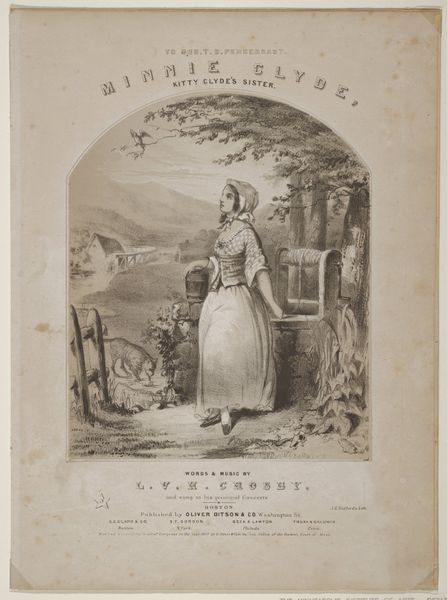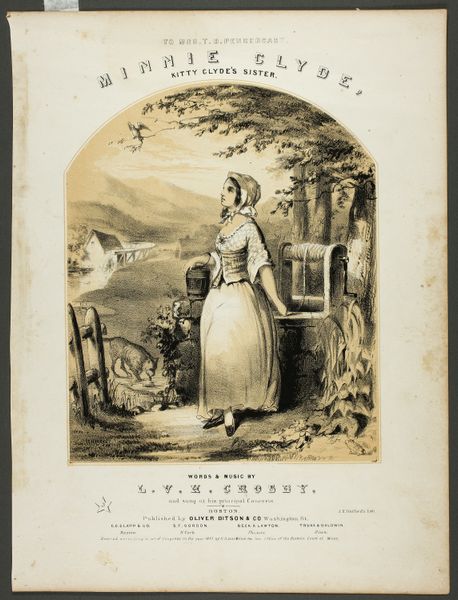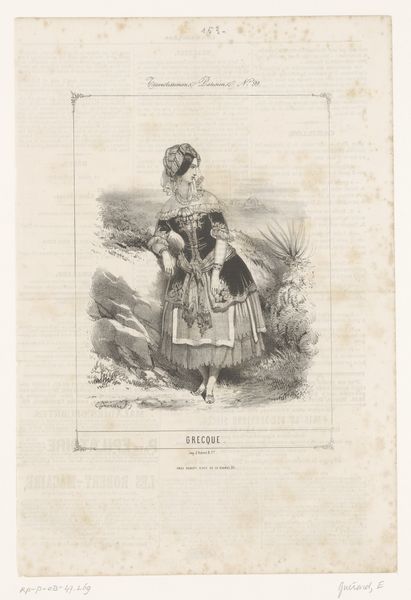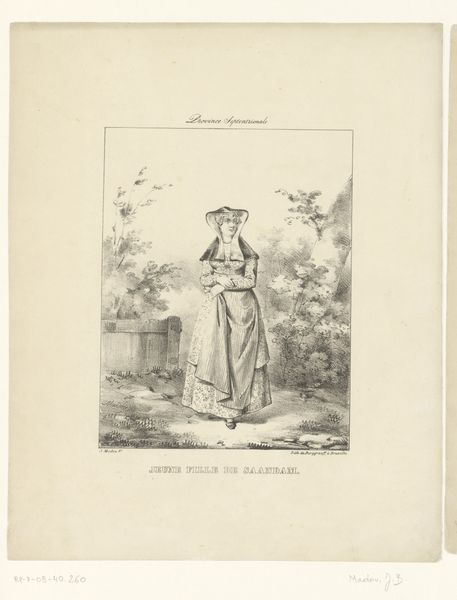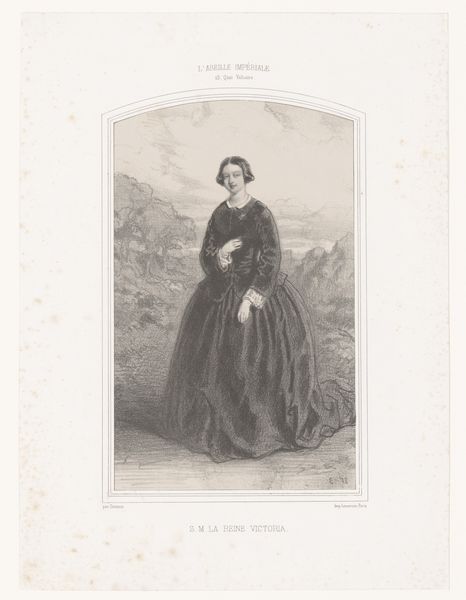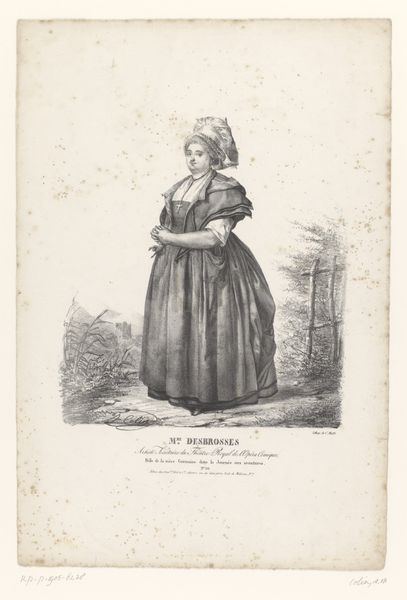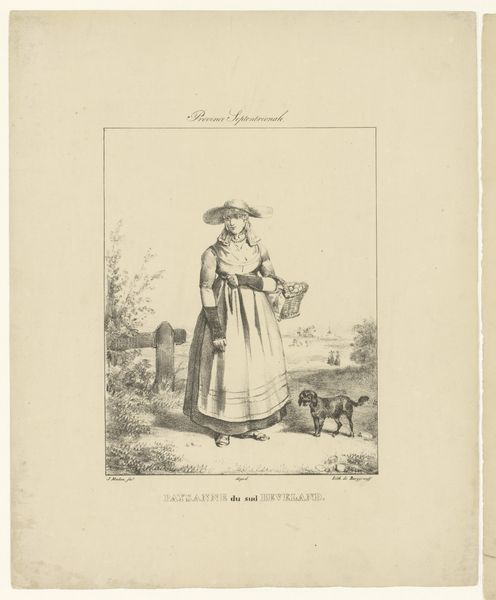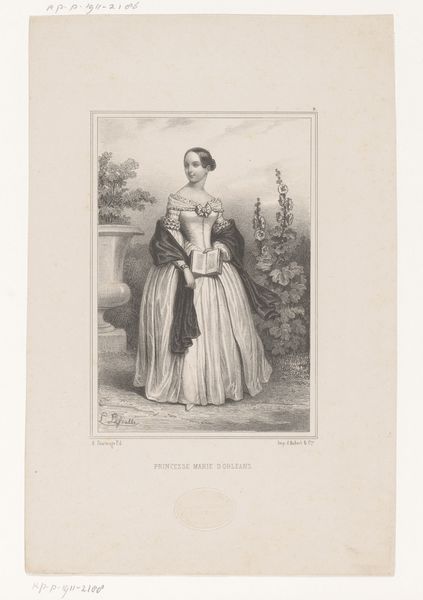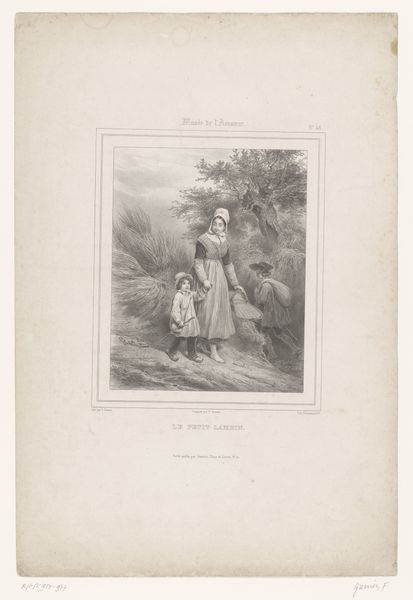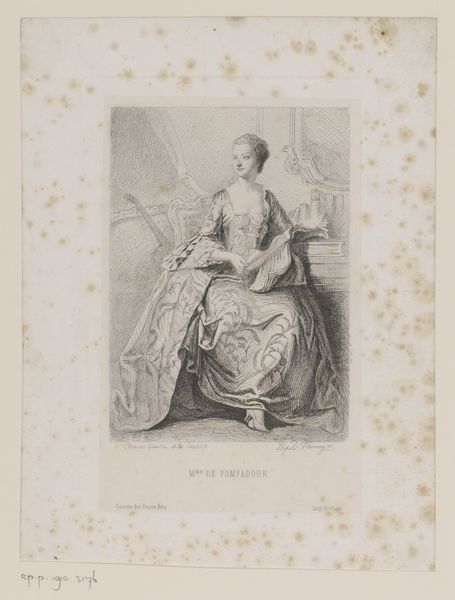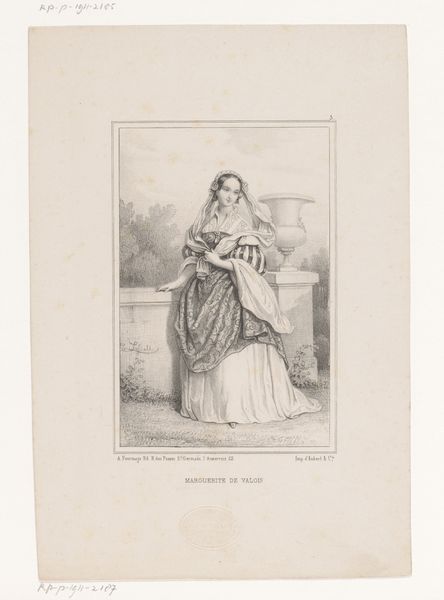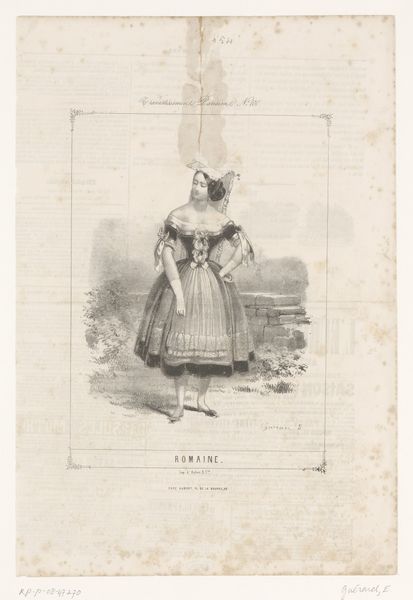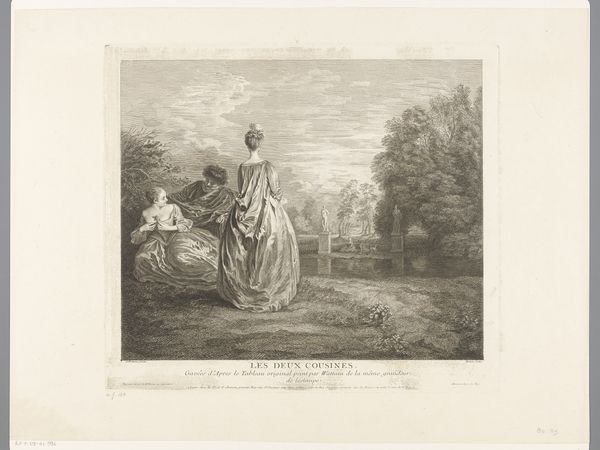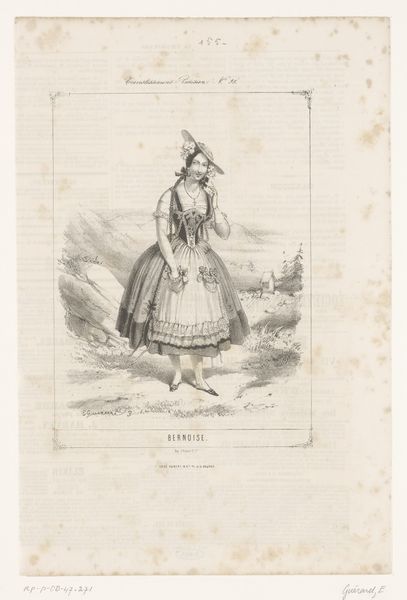
drawing, lithograph, print, paper
#
drawing
#
lithograph
# print
#
landscape
#
figuration
#
paper
#
genre-painting
Dimensions: 217 × 176 mm (image, without text); 340 × 251 mm (sheet)
Copyright: Public Domain
Editor: Winslow Homer's lithograph, "Minnie Clyde" from 1857, depicts a woman by a well. It seems simple at first glance, but there's a palpable sense of rural life being romanticized. How should we interpret this work in its historical context? Curator: This piece is interesting when considering the social and political currents of the time. Pre-Civil War America saw a rise in sentimental genre scenes, often idealizing rural life and domesticity. Do you see how the image almost entirely ignores the complex realities facing the United States at this moment in time? Editor: You mean the increasing tensions around slavery and industrialization? Absolutely, there's no hint of that here. It's almost escapist. Curator: Exactly. The "genre-painting" elements you mention tap into that, evoking simpler times in this print sold as the cover for a musical score, further commodifying that nostalgic view. It sold an image tied to its corresponding sounds and music. What audience do you imagine purchased this item? Editor: Probably middle-class families looking for light entertainment. They likely yearned for that idyllic scene despite their own potentially uncomfortable realities. It is fascinating to think that the commercial aspects shaped art production and, even its reception, during this period. Curator: Precisely. Art often reflects the socio-political anxieties, either directly or, as is more visible here, indirectly through escapism and creating idyllic visions of the country. And such images also played a role in creating perceptions, even misconceptions of contemporary life and ideals of femininity and domesticity at that time. It all tells us a little about its consumers, which are usually a much wider public than it may seem. Editor: That’s given me a lot to think about in terms of the politics of representation and image-making during the era. I had originally seen just pretty music cover. Thanks!
Comments
No comments
Be the first to comment and join the conversation on the ultimate creative platform.
